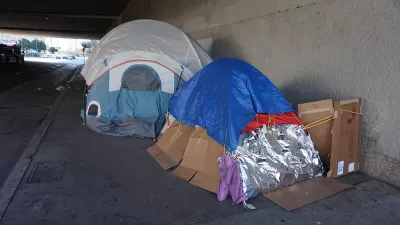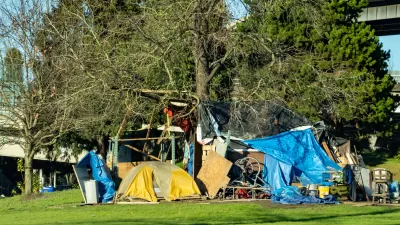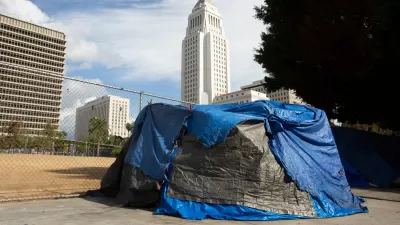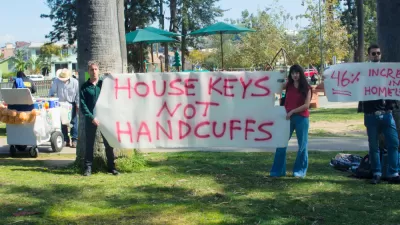The Los Angeles Times crunched data from the 2019 point-in-time count of homelessness in Los Angeles County. What they found diverged profoundly from official findings.

"Mental illness, substance abuse and physical disabilities are much more pervasive in Los Angeles County’s homeless population than officials have previously reported," report Doug Smith and Benjamin Oreskes.
"The Times examined more than 4,000 questionnaires taken as part of this year’s point-in-time count and found that about 76% of individuals living outside on the streets reported being, or were observed to be, affected by mental illness, substance abuse, poor health or a physical disability," add Smith and Oreskes.
Those findings contrast findings from the same data presented by the Los Angeles Homeless Service Authority, the agency which conducted the survey. "In its presentation of the results to elected officials earlier this year, the agency said only 29% of the homeless population had either a mental illness or substance abuse disorder and, therefore, 71% 'did not have [pdf] a serious mental illness and/or report substance use disorder.'"
Leadership at the homeless services authority id not dispute the findings of the Times analysis, instead blaming the discrepancy on the format for the report required by federal regulators.
But wait; there's more: "The Times analysis aligns with a national study released Sunday by the California Policy Lab at UCLA, which found even higher rates in most categories. It also found that a mental health “concern” affected 78% of the unsheltered population and a substance abuse “concern,” 75%."
FULL STORY: Are many homeless people in L.A. mentally ill? New findings back the public’s perception

Maui's Vacation Rental Debate Turns Ugly
Verbal attacks, misinformation campaigns and fistfights plague a high-stakes debate to convert thousands of vacation rentals into long-term housing.

Planetizen Federal Action Tracker
A weekly monitor of how Trump’s orders and actions are impacting planners and planning in America.

In Urban Planning, AI Prompting Could be the New Design Thinking
Creativity has long been key to great urban design. What if we see AI as our new creative partner?

Pedestrian Deaths Drop, Remain Twice as High as in 2009
Fatalities declined by 4 percent in 2024, but the U.S. is still nowhere close to ‘Vision Zero.’

King County Supportive Housing Program Offers Hope for Unhoused Residents
The county is taking a ‘Housing First’ approach that prioritizes getting people into housing, then offering wraparound supportive services.

Researchers Use AI to Get Clearer Picture of US Housing
Analysts are using artificial intelligence to supercharge their research by allowing them to comb through data faster. Though these AI tools can be error prone, they save time and housing researchers are optimistic about the future.
Urban Design for Planners 1: Software Tools
This six-course series explores essential urban design concepts using open source software and equips planners with the tools they need to participate fully in the urban design process.
Planning for Universal Design
Learn the tools for implementing Universal Design in planning regulations.
planning NEXT
Appalachian Highlands Housing Partners
Mpact (founded as Rail~Volution)
City of Camden Redevelopment Agency
City of Astoria
City of Portland
City of Laramie





























